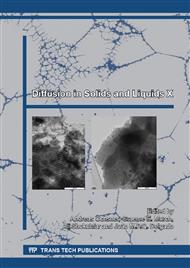p.166
p.172
p.178
p.183
p.188
p.194
p.200
p.207
p.212
Using the Fractional Advection Dispersion Equation to Improve the Scale Effect in the Sampling Process of Column Tests with Lateritic Soils
Abstract:
Breakthrough curves (BTCs) obtained from column tests in heterogeneous soils are not satisfactorily simulated with the advection-dispersion equation (ADE) for some heavy tailed cases. Furthermore, the dispersion coefficient calculated with the ADE for heavy tailed BTCs are scale dependent when simulating columns of soil larger than the original test depth. In this paper we compare the usage of a fractional ADE (FADE) and the classical ADE to fit column tests BTCs made with Brazilian lateritic soils, discussing both contaminant transport theories and underlying stochastic models. The FADE can more accurately simulate heavy tailed BTCs, and when applying the adjusted FADE parameters to longer depths of soil, the FADE also predicts a more realistic scenario of contaminant transport through heterogeneous soil. The addition of fractional calculus in the advection-dispersion equation proves to improve contaminant transport predictions based on column tests over the classical ADE, with the use of a constant fractional dispersion coefficient that is scale independent.
Info:
Periodical:
Pages:
188-193
Citation:
Online since:
July 2015
Price:
Сopyright:
© 2015 Trans Tech Publications Ltd. All Rights Reserved
Share:
Citation:


